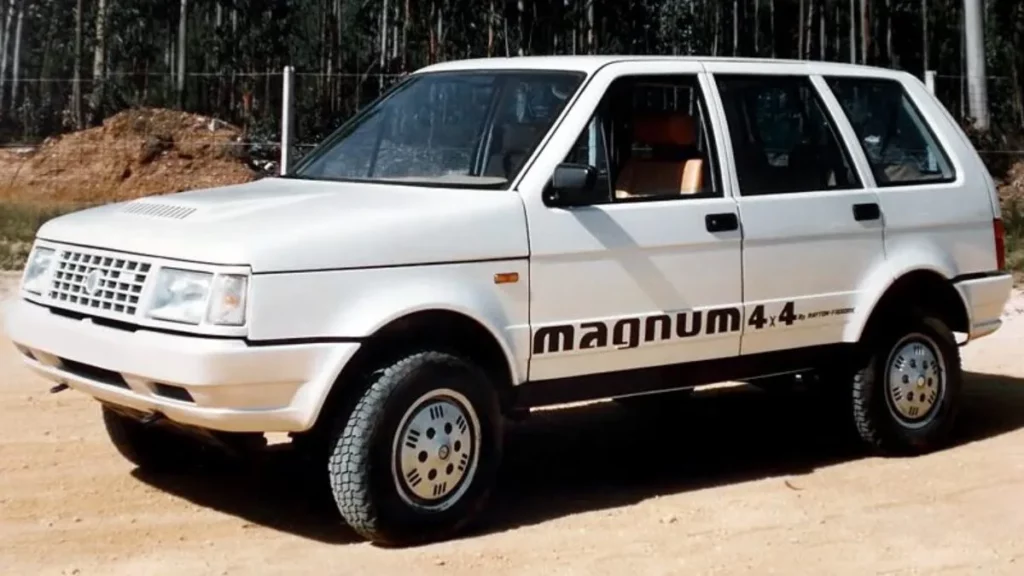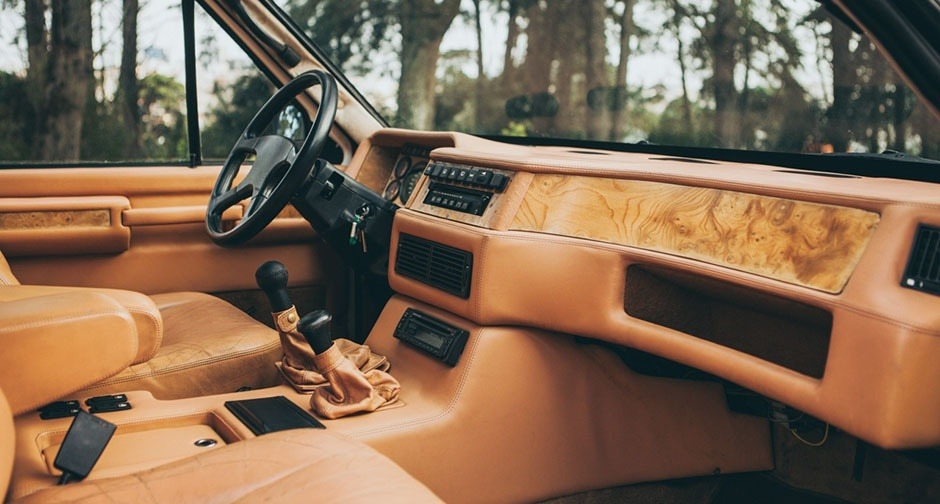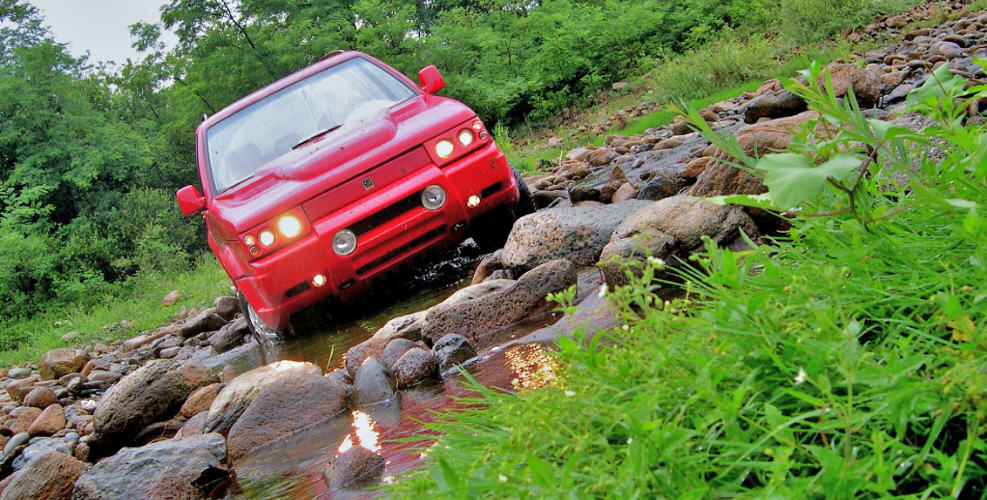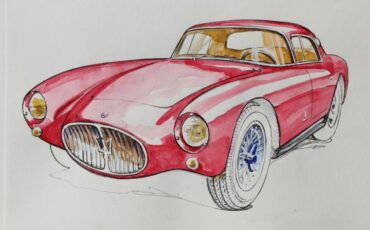
The origin
The Magnum, presented in 1984 by Rayton Fissore (Carrozzeria Fissore heir company), was the last entirely Italian off-road vehicle after the Fiat Campagnola left the scene in 1987.
Designed by Tom Tjaarda and presented at the Turin Motor Show in 1985, it was characterized by an elegant line, a high level of comfort and a very accurate interor results of the handcrafted assembly. The Magnum also featured hi-level and luxury accessories, never seen on an off-road vehicle of those years, such as electric windows, air conditioning, alloy wheels, leather interior. The Magnum also made use of components of “recycled” from other cars, like the Fiat Uno tail lights.
Despite the lack of a sales network, the Magnum was realtively sold well. It was also the Italian Police service vehicle with over 1,000 speciments ordered. In the 1990s the Magnum, redesigned in the front and fitted with a 5-liter Ford V8 engine capable of delivering 185 hp, also landed in the U.S. sold with the LaForza brand.
In 1996 the company name changed to “Magnum Industriale” which at the 1998 Turin Auto Show, unveiled the prototypes VAV (“Vehicle of Fast Attack”) and a completely redesigned road version. After two years of negotiations, the company was taken over by Laforza SpA, which, based on the Magnum, produced even more prototypes with three different engines; a 440 HP petrol V8, a 250 HP V6 Alfa Romeo and a 170 HP Iveco TurboDiesel. Once again, the prototypes didn’t reached the production stage due to lack of capitals and soon the company went bankrupt.

In 2004 Alessandro Festa, owner of “Golden Car”, bought all the know-out and all the materials of the the Magnum plant in Cherasco. Sinces Golden Car, in the past, had developed and produced all the equipment which was used to produce the Magnum, it tried to take over the production with significant improvements.
Since the beginning of its history, the Magnum bodies were produced in Caramagna (CN) by Golden Car itself which, following the acquisition, began to analyze the strengths and weaknesses of this vehicle, in oder to create a new version based on its technological heritage.
The LaForza Magnum prototype
The first model of this ambitious project was a Magnum prototype fitted with the Alfa Romeo V6 Busso engine and built under the Laforza brand. The LaForza Magnum V6 prototype stood out for its aggressive look of the front with its new head lights.

Inside LaForza Magnum, the materials and confort were in line with the luxury ’85 version. The brightness was excellent thanks to the large glass surfaces and the sunroof. A satellite navigator has been also added to the dashboard. The 250 HP Alfa Romeo V6 did actually a good job regardless its size; acceleration has significantly improved and top speed went from 150 to 190 km/h. Handling was also surprisingly good thanks to the calibration of the suspensions and the considerable track width. Off-road performance remained as reliable as in the first version and allowed to overcome slopes of up to 100% with the reduced gears. This version was upgraded also in the braking system which now adopted ventilated discs also on the rear axle. ABS was also added which could be deactivated for better offroad.
In 18 years around 6000 Magnums were produced including the American LaForza versions (1200) and the latter updated and assembled by Pininfarina and subsequently supplied directly by Rayton Fissore. After numerous legal events involving the manufacturer and its partners, production officially ended in 2003 with the last bodies assembled by LaForza Automobiles Inc. in the U.S.


